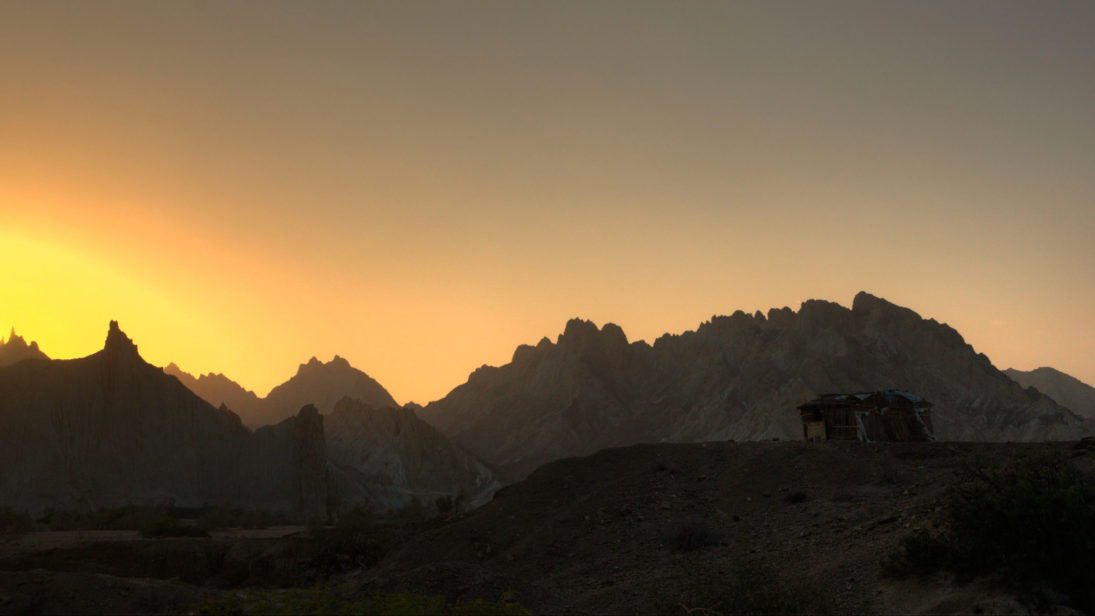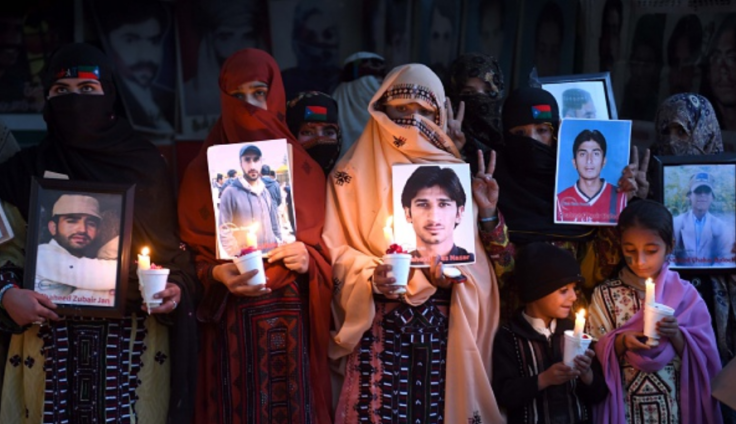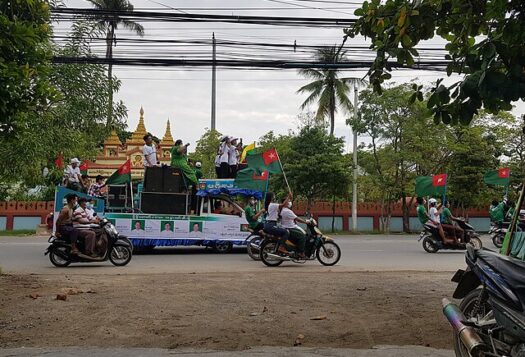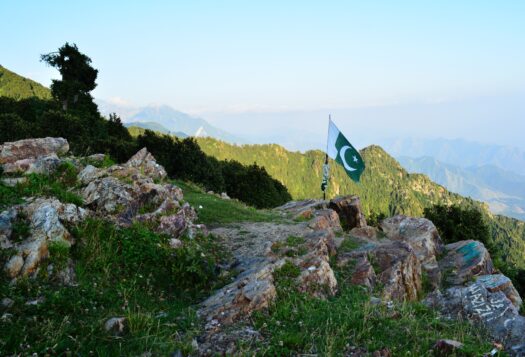
On May 1, 2020 Quaid-i-Azam University (QAU) students Shahdad and Ehsan Baloch were killed in Balochistan in a skirmish with Pakistani security forces. Little has been reported on the nature of the skirmish and both Shahdad and Ehsan had been vocal critics of the state and the human rights situation in Balochistan. In the aftermath of their death the Baloch Liberation Army (BLA)—a designated terrorist organization by the United States, Pakistan, and the United Kingdom—claimed them as their members. However, dismissing the two as members of a terrorist organization and overlooking the deaths of two bright, young Baloch risks missing the full political situation in this region.
The real question is, as highly educated youth, why did Shahdad and Ehsan Baloch join the BLA? What is the political situation that has made educated youth feel like the only avenue is an armed response? To avoid yet another generation of Baloch youth being lost to violence and insurgency, Pakistani authorities must address the deep mistrust between the federal government and the Baloch population, and stop looking at Balochistan only through the lens of defense and security.
Explaining the Unrest
Located in southwest Pakistan, Balochistan is a mountainous, mineral-rich border region. Yet, it remains among the least developed places in the country. The province has been the center of several waves of insurgencies since 1948—the most recent of which has been ongoing at a low-level since the mid-2000s. Balochistan had a history of regional autonomy before and during the British colonial period, and a number of Baloch leaders have been resistant to being part of Pakistan since 1947. The state’s growing military presence, economic projects that have been viewed as bringing in outsiders and exploiting resources while ignoring local development, and the state’s harsh crackdown on dissent have been viewed as efforts to squash calls for greater political autonomy. Over the past two decades the BLA has been the main militant group fighting for greater autonomy and targeted security personnel, civilians, and infrastructure in attacks—gaining notoriety for targeting CPEC projects in recent years. Pakistan has pointed towards India as a supporter of Balochistan’s unrest and militant groups, however, this does not account for many of the legitimate grievances and political movements over Balochistan’s human rights situation. Many Baloch have lost their lives, with reports noting that youth, students, and intellectuals are among many who have been killed or have disappeared.
To avoid yet another generation of Baloch youth being lost to violence and insurgency, Pakistani authorities must address the deep mistrust between the federal government and Baloch population, and stop looking at Balochistan only through a lens dominated by defense and security.
Grievances in Balochistan stem from the government’s ignoring of provincial level corruption and failing to address development issues. For instance, despite supplying approximately 20 percent of Pakistan’s total natural gas, much of Balochistan does not have access to this source of energy and has faced significant natural gas shortages in freezing winter months. Grievances over distribution of resources have been compounded by the massive Gwadar Port project, or the “crown jewel” of CPEC. Efforts the state has taken have been accused of being insincere or mere rhetoric, such as human rights laws promised with the Aghaz Huqooq-i-Balochistan (“the Beginning of Rights of Balochistan”) package in 2009—later shown to be symbolic rather than the start of any substantive steps.
The failure of the Pakistani government’s response is perhaps best highlighted by the military’s killing of nationalist leader Nawab Akbar Khan Bugti in 2006, which commentators have argued contributed to a new wave of insurgency in Balochistan. A Baloch sardar or leader and former minster of the interior and chief minister of Balochistan, Bugti was a well-known figure. He had also been accused of aiding and supporting a militia in the waves of insurgency in Balochistan, as well as supporting the BLA, although he denied this. Prior to his death, Bugti had been involved in an armed campaign against state military installations and infrastructure in the region, demanding greater autonomy and rights for Baloch people, which was met with extreme force by the Musharraf government and resulted in a conflict that displaced up to 200,000. Bugti’s death, however, intensified the conflict, and has made Baloch youth even more distrustful of Pakistan’s central government, drawing educated youth towards a more militant response.
However, while militant groups in Balochistan are given more attention, peaceful protests have almost always existed. For example, Mama Qadeer Baloch lost his son and chose to peacefully march towards Islamabad. He also set up a Baloch missing persons camp in Quetta and has since become a prominent voice for human rights in Balochistan. However, while up to two hundred thousand individuals joined his march towards Islamabad, it was ultimately ignored by central government. This is in line with other protests in Balochistan that have received little coverage in mainstream media.

Who were Shahdad and Ehsan Baloch?
Shahdad, originally from the Turbat area in Balochistan had worked with the Human Rights Commission of Pakistan and had reported on the disappearances of Baloch by the security forces of Pakistan. An active student of politics and vocal human rights activist, Shahdad earned a master’s degree in Defense and Strategic Studies from QAU in Islamabad. He was currently enrolled in a masters of philosophy in Pakistan studies and served as the general secretary of Baloch Student Council at his university. Ehsan Baloch, another QAU student, had received his masters from gender studies department.
Their family, friends, and teachers were shaken by their sudden deaths. Many took to social media to show their shock and frustration while also asking what had led to the death of the two students. One of Shahdad’s teachers expressed her grief on social media noting the common mistreatment of students from marginalized regions. Meanwhile, Ali Usman Qasmi, a historian, reacted on Twitter, noting how disheartening it was that the situation was such that even Baloch students pursuing opportunities in higher education came to see armed struggle as the only way to achieve their rights.
Speaking against Pakistani authorities and their gross violations of human rights has always been a risky endeavor, especially in Balochistan, where widespread media blackouts that include suspending 3G and 4G services is common. Often journalists are forced to turn a blind eye toward disappearances in the province out of fear of repercussions—with multiple journalists in Balochistan being killed and receiving threats. As of last month, Pakistan has also reportedly banned the official website of the Human Rights Commission of Balochistan. Many Baloch, including many in Balochistan’s diaspora population, have turned to international platforms to highlight the Pakistani state’s repression and atrocities in Balochistan. However, the recent death of Sajid Hussain, Editor in Chief of the Balochistan Times who was found dead in Sweden where he had been granted political asylum after receiving death threats for his reporting in Pakistan, has raised concerns even among activists abroad.
Speaking against Pakistani authorities and their gross violations of human rights has always been a risky endeavor, especially in Balochistan, where widespread media blackouts that include suspending 3G and 4G services is common. Often journalists are forced to turn a blind eye toward disappearances in the province out of fear of repercussions—with multiple journalists in Balochistan being killed and receiving threats.
New, often younger, Baloch activists, have also used peaceful and nonviolent means of protest. Yet, nonviolent approaches have reportedly often been met with force by the authorities. Further, student leaders have been reported as frequent targets of security forces. Mohammad Hanif, a renowned author and longtime advocate for Baloch rights who has interviewed families with missing members, wrote recently that the real issues in Balochistan being ones not of illiteracy but of education. He suggested that Shahdad, Ehsan, and other educated Baloch like them made themselves more vulnerable to state violence by becoming educated and seen as a security threat to the State once becoming more empowered with education.
Addressing Baloch Grievances
Baloch anger, mistrust, and confusion will increase if Pakistan’s central government continues to rule Balochistan through brute power and constant suspicion. These issues can only be resolved by expanding Baloch political rights and focusing on development projects that address the needs of the Baloch people and other communities within Balochistan. The time to expand Baloch rights is now. As Pakistan’s government and military both are voicing support for an Afghan-led Afghan-owned peace process, Pakistani authorities must also look inward, and support and facilitate a Baloch-led and Baloch-owned peace process to ensure a peaceful future for the province. After all, Pakistan cannot afford to keep losing young and educated Baloch like Shahdad and Ehsan over and over again.
***
Image 1: Umair Adeeb via Flickr
Image 2: Banaras Khan/AFP via Getty Images


